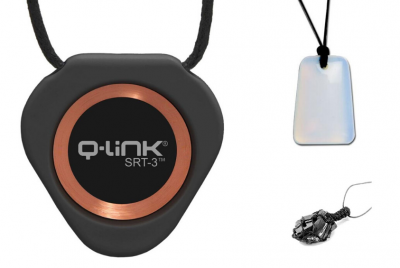When worn correctly, both Bluetooth and wired earbuds offer a lightweight and comfortable way to listen…
6 Highly Effective EMF Blocking Curtains For Your Home or Office
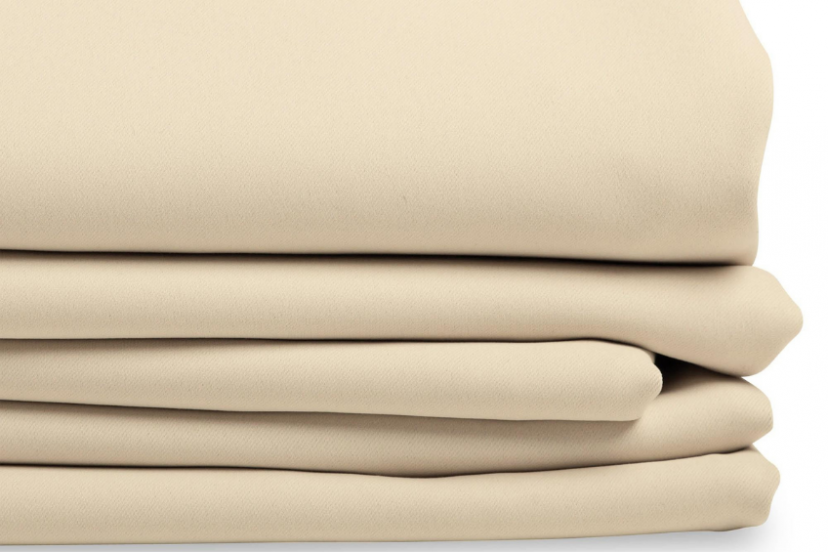
*We may earn a commission for purchases made using our links. Please see our disclosure to learn more.
There’s nothing like natural sunlight to brighten up a room. For many, the more windows a room has, the better. But if you’re trying to reduce your exposure to EMF radiation, windows represent yet another entry point for outside EMFs to enter your home.
Does that mean for a truly EMF-free home you need to board up your windows?
Not exactly. Windows may be problematic, but there are workarounds. EMF blocking curtains are one solution. These are curtains made from protective materials that help reduce the amount of EMF radiation that can penetrate through. When you want to let sunlight in, open the curtains as you normally would. In the evening when you close them, you will be increasing your protection from EMF radiation.
EMF blocking curtains are especially beneficial because nighttime is the absolute best time to reduce your EMF exposure. When we are constantly surrounded by EMF radiation, our bodies have no time to repair themselves from the damage being done, which can ultimately contribute to health problems. If you can reduce or eliminate EMF radiation at night, you are allowing your body to heal as it sleeps, which is the body’s most restorative time.
If you’re ready to swap out your curtains for an anti-EMF model, there are several different options out there to choose from. And if none of those strike your fancy, you can even make your own using protective fabric. In this guide, we will highlight some of the best anti-radiation curtains on the market. We will then talk about how to create your own, as well as how to test the effectiveness of your new curtains.
6 best anti-radiation curtains
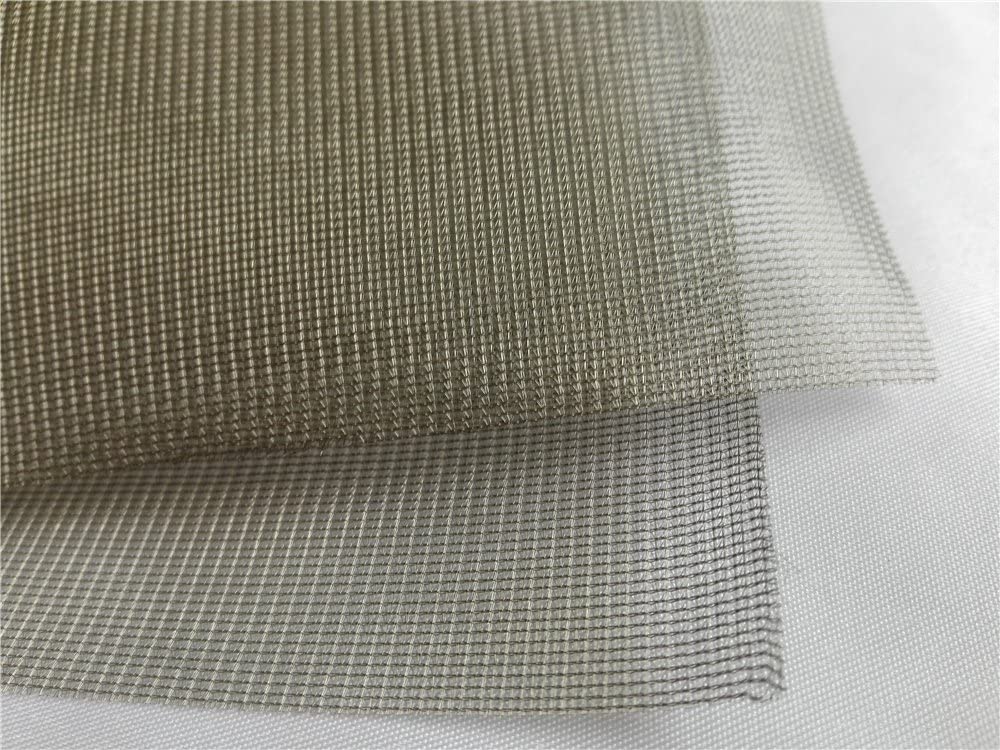
6. Amradield Copper Mesh Gauze. Whether you’re looking for material for curtain liners or you simply prefer lighter curtains that let light penetrate through, Amradield’s Copper Mesh Gauze has you covered. It is available as a 43-inch wide roll in multiple lengths, from 197-inches to 39-inches, so no matter the size of your windows or how many curtains you’re looking to make, there is a size out there for you. Amradield’s gauze is made from nickel, silver, copper, and polyester. It is extremely lightweight and conductive, and capable of blocking both RF and ELF-EMF radiation. Best of all, it’s easy to cut and sew for DIY curtains.
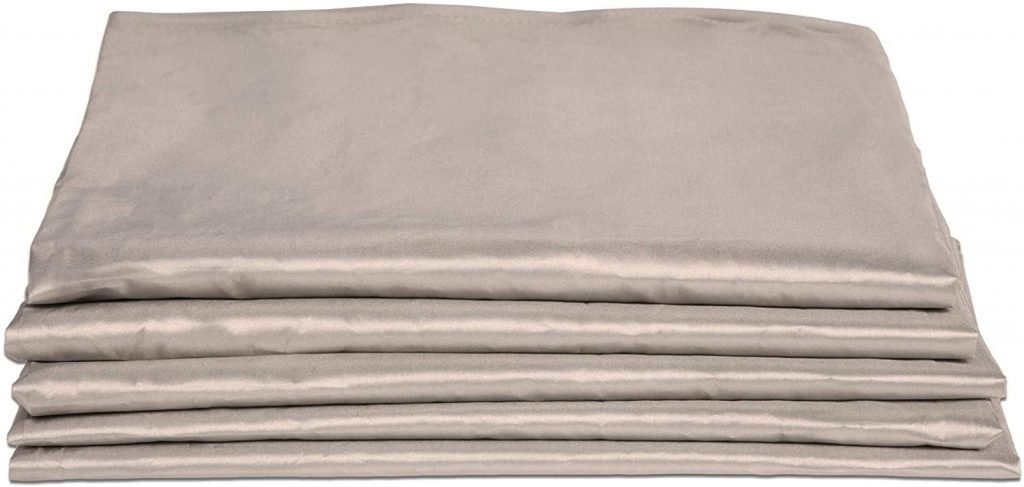
5. Moondream EMF Radiation Curtain Lining. If you’ve already picked out curtains you love, there’s no need to ruin the look of your room with typical anti-radiation curtains. Moondream’s EMF Curtain Lining adheres to the back of your existing curtains. Simply lay them down as flat as possible and stick the curtain lining on. Each liner is sold as a single panel, and it is available as a 53-inch wide sheet that is either 58” or 78-inches long, depending on which size you select.
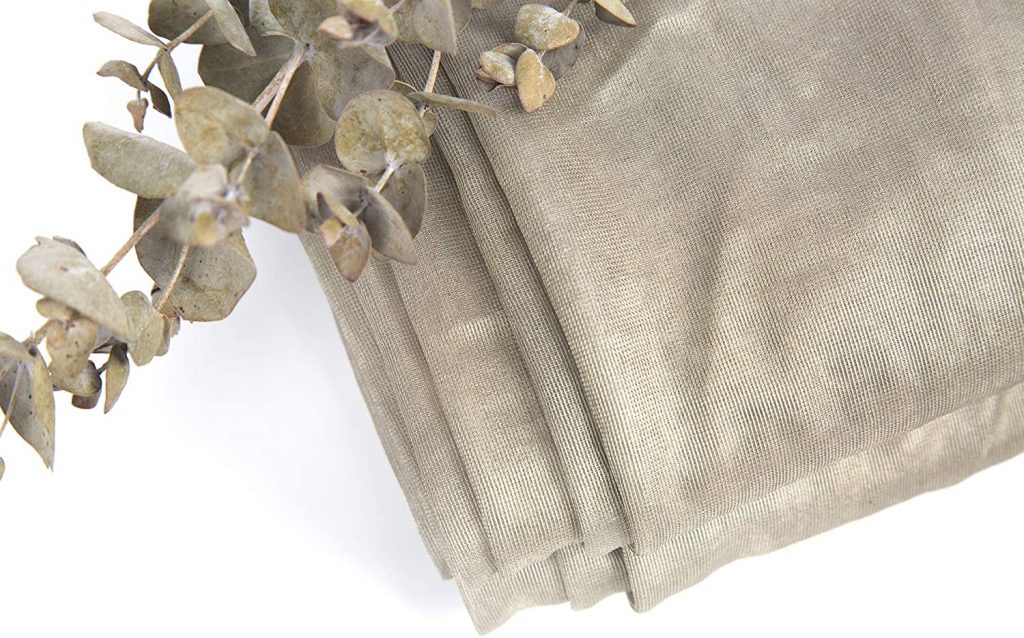
4. Blocsilver EMF Protection Fabric. Another option for those who would prefer to make their own set of EMF blocking curtains. Blocsilver’s protective fabric is lightweight and airy, so you can either use it for standalone curtains or a liner for your existing set. The fabric attenuates frequencies between 10MHz and 4GHz and it can even be machine washed on a gentle cycle with low heat. The manufacturer does note that the fabric begins to lose its effectiveness after 40 washes, at which time they offer additional instructions for keeping your fabric clean. Blocsilver’s fabric is effective because of the silver fibers sewn into the nylon mesh-like fabric.
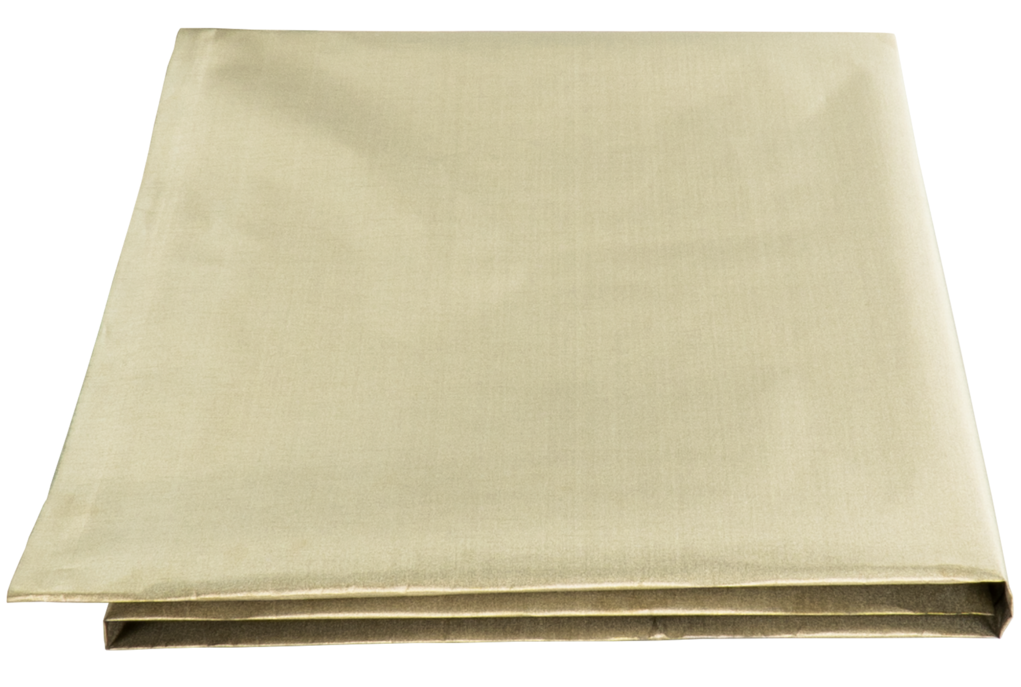
3. Mission Darkness TitanRF Faraday Fabric. If there’s one protective fabric that is versatile for a variety of different applications, it’s this one from Mission Darkness. Their TitanRF Faraday Fabric was lab tested and proven to shield against frequencies all the way up to 40GHz. That means it is effective against just about any form of EMF radiation, including millimeter-wave 5G. It is easy to cut and sew, and can be purchased in sizes ranging from one yard all the way up to 50 yards. The fabric itself is relatively lightweight but still quite solid, so if you are looking to make your own set of blackout curtains, this is an excellent choice.
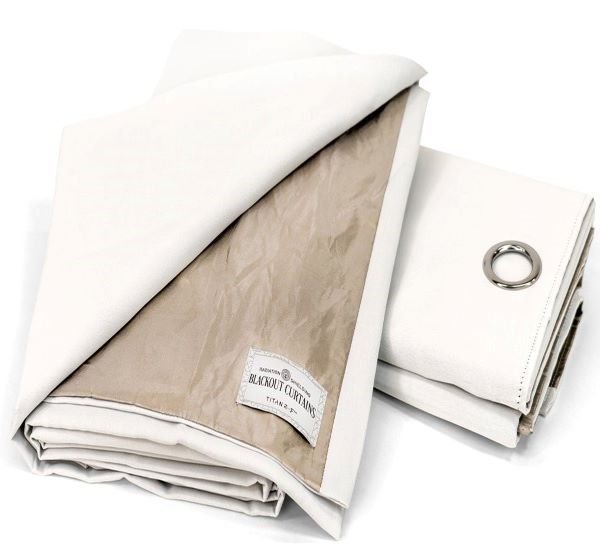
2. Mission Darkness Blackout Curtains. If you liked the sound of TitanRF Faraday Fabric but you’d rather not make your own curtains, you’re in luck. Mission Darkness actually produces their Blackout Curtains using Faraday Fabric. Each set includes two panels that are 52-inches wide and 84-inches long. Not only do they block out the sun, but they attenuate frequencies between 10MHz and 40GHz, as well. The Faraday Fabric is on the backside of the curtain, and the front is made from a discreet polyester that is soft and available in three different colors: white, beige, and grey.
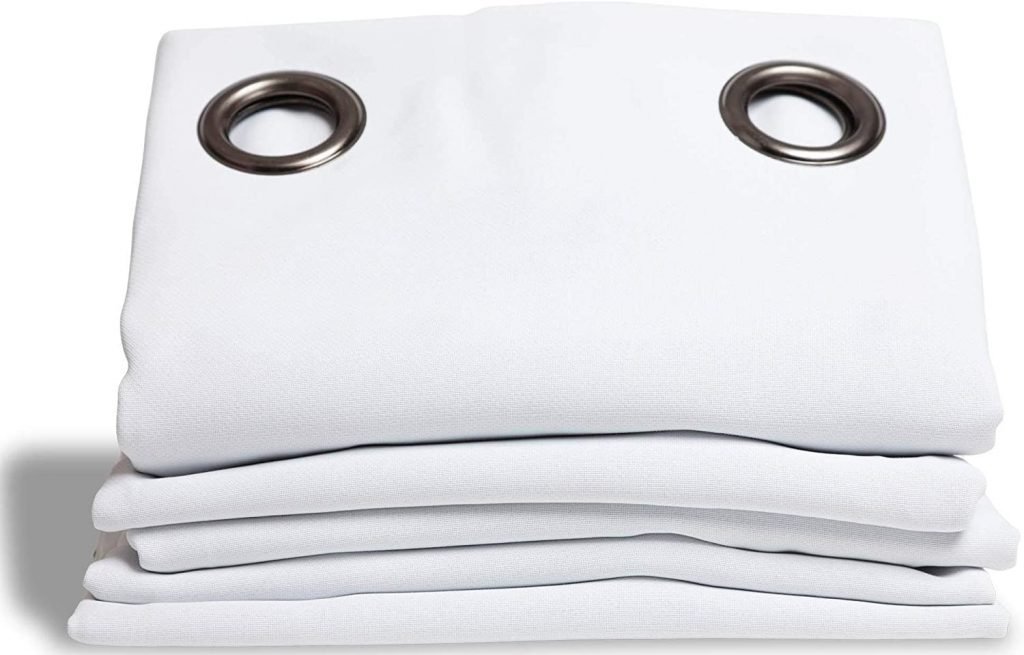
1. Moondream 2-in-1 EMF Blackout Curtains. Another offering from Moondream, these 2-in-1 Blackout Curtains are effective against both sunlight and EMF radiation. They are effective against frequencies ranging from 800MHz to 5200MHz and can block out 100% of incoming sunlight when closed. The curtains use rust-proof grommets to attach to your curtain rod, and each set is sold as a single, 51-inch wide and 102-inch long panel. The curtains themselves are a vibrant and bright white color that can match just about any room, while the grommets are dark grey, creating a nice contrast. Moondream’s curtains are machine washable and laboratory tested for effectiveness.
Tips for making your own EMF blocking curtains
If you’re crafty and know how to sew, making your own curtains is an excellent way to get exactly what you want. A few of the items on our list above– Amradield’s Copper Mesh Gauze, for example, and Blocsilver’s EMF Protection Fabric — are ideal for such a task. These fabrics don’t come curtain-ready, but the material is airy and breathable, making them ideal for curtains.
If you’d prefer blackout-style curtains, there is also always TitanRF Faraday Fabric from Mission Darkness. This fabric is a bit thicker than the other two we mentioned and better at blocking out light. It really just depends on what type of curtains you’re looking for.
Likewise, you could also use the mesh-style fabrics we mentioned as curtain liners, and simply put them under or on top of your favorite pair of non-protective curtains. EMF blocking curtains, in general, may not have the fancy designs, patterns, or colors you need to match your room, so using them as curtain liners under your existing curtains allows you a little more flexibility.
Ultimately, there’s no right or wrong way to do it — it all boils down to personal preference and style.
To make your own curtains, first, measure your windows to determine the amount of fabric you’ll need. You’ll also want to decide if you want a single curtain or multiple panels. If going the panel route, you will still measure the entire width of the window (along with the desired amount of overhang,) but will simply cut the measurement in half to get each panel’s size. Also be sure to measure the length of the curtains, as well. Then, add about four-inches onto the measured width and twelve-inches to the height, to accommodate the hemming.
Cut your fabric to the desired dimensions. If you want your curtains to look professionally-made, you can add in a side-hem. This involves folding about one-inch of fabric over on itself, which you then sew together, either using a sewing machine or your hands. Some recommend ironing the hem, but you may not want to apply that much direct heat to your protective fabric.
To hang the curtains, you have a couple of different options. You can cut holes and attach grommets for added durability. Or, you can create a pocket that your curtain rod slides through. It depends on what kind of look you want, as well as what type of curtain rod you have. If you opt for a pocket, simply fold the fabric over and sew the bottom of the topic to the curtain fabric, leaving a hole big enough for your curtain rod to slide through.
The tutorial below illustrates how to measure and sew a rod pocket curtain.
Testing your curtains
It’s always a good idea to test any EMF protective product you try. The goal is to reduce your exposure, so you want to make sure that the measures you’re putting into place are actually effective. To do this, you can use an EMF meter.
For those who don’t already have an EMF meter at home, see our guide to The Best EMF Meters For Any Budget for help selecting a model.
Testing your curtains is a straightforward process once you have your EMF meter in hand. First, take a measurement near the window with the curtains open. Repeat the measurement process with the curtains closed. If the curtains are doing their job, your EMF levels will drop when they are pulled shut.
Final thoughts
Natural sunlight is certainly important, but so is protecting yourself from EMF radiation. Strike a balance between the two by drawing your anti-radiation curtains closed at night to protect you while you sleep.


